Table of Contents
Washoku cuisine is a type of traditional Japanese cuisine that is famous for its intricate flavors and delicate presentation. This culinary art form is more than just food. It’s an essential part of Japanese culture for generations.
Washoku cuisine has a rich history that dates back thousands of years. The ingredients used in Washoku dishes are often seasonal and sourced locally, making the cuisine very sustainable and environmentally friendly.
Over the years, Washoku cuisine has gained immense popularity worldwide due to its unique flavors, healthy ingredients, and beautiful presentation. Many restaurants across the globe now offer Washoku dishes.
In 2013, Washoku cuisine was officially recognized as an intangible cultural heritage by UNESCO. It further emphasizes its importance in Japanese culture and the world at large.
The Basics of Washoku Cuisine
The Basic Elements: Rice, Fish, Vegetables, and Seasonings
The basic elements of Washoku cuisine are rice, fish, vegetables, and seasonings. Rice is the staple food in Japan and they often serve it alongside other dishes. Fish is a popular protein source in Washoku cuisine and they typically serve it grilled or simmered. Vegetables are also an important component of Washoku cuisine, and many dishes feature seasonal vegetables that are either raw or lightly cooked. Finally, the use of seasonings, such as soy sauce, mirin, sake, and miso, is essential in Washoku cuisine to enhance the flavor of the dishes and to create a balance between the different tastes. The combination of these four elements results in dishes that are not only delicious, but also healthy, nutritious, and visually appealing.
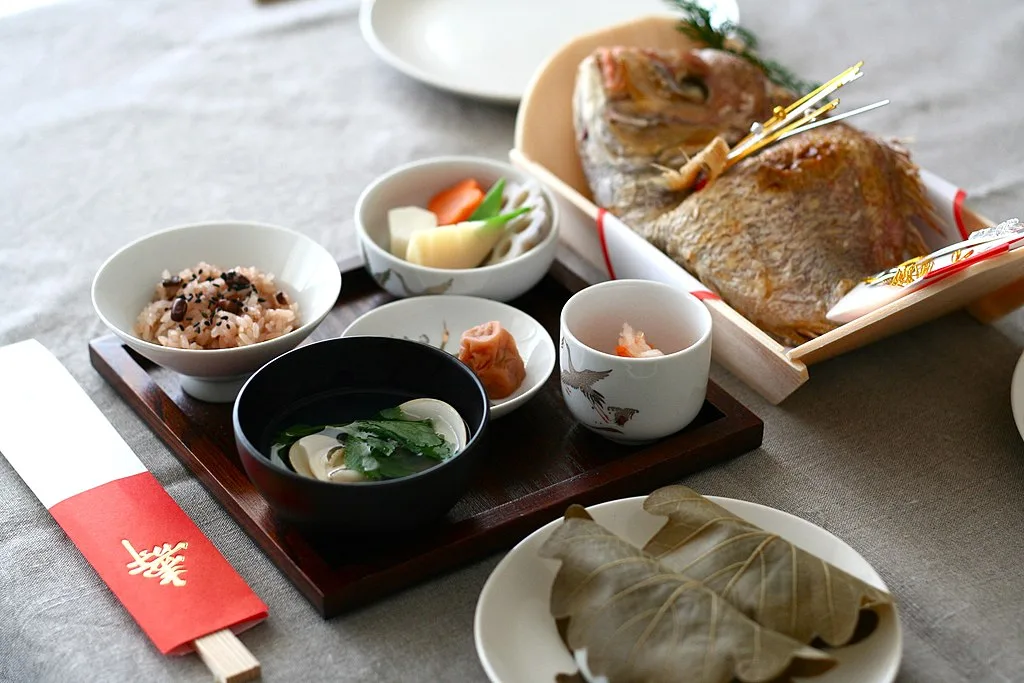
Umami: The Secret Ingredient
Umami people of Japan know as the fifth taste, alongside sweet, salty, sour, and bitter. It is a savory or meaty flavor that exists in many Washoku dishes. Umami is an essential element of Washoku cuisine, as it adds depth and complexity to the dishes. Some common ingredients that contribute to the umami flavor include dashi (a type of broth made from dried fish and seaweed), soy sauce, miso, and mushrooms. The use of umami in Washoku cuisine is not just about taste, but also about health. Many of the ingredients that contribute to the umami flavor are also rich in nutrients. Such as amino acids and minerals. So, next time you’re enjoying a delicious Washoku dish, remember to thank umami for its role in making the dish so flavorful and nutritious.
Ichiju-Sansai: The Traditional Japanese Meal that Emphasizes Balance and Harmony
Ichiju-Sansai is a traditional Japanese meal that features one soup and three dishes. It is a perfect example of Washoku cuisine’s emphasis on balance and harmony. The meal typically includes a bowl of rice, a bowl of soup, and three dishes that feature seasonal ingredients, such as fish, vegetables, and pickles. The idea behind ichiju-sansai is to create a balanced and satisfying meal that is visually appealing, nutritionally complete, and harmonious in taste. They serve this meal in small portions. And each dish is there to complement the others in terms of flavor, texture, and color. This traditional Japanese meal is not only a delicious culinary experience, but also a reflection of the Washoku philosophy of food as a way to nourish the body, mind, and spirit.
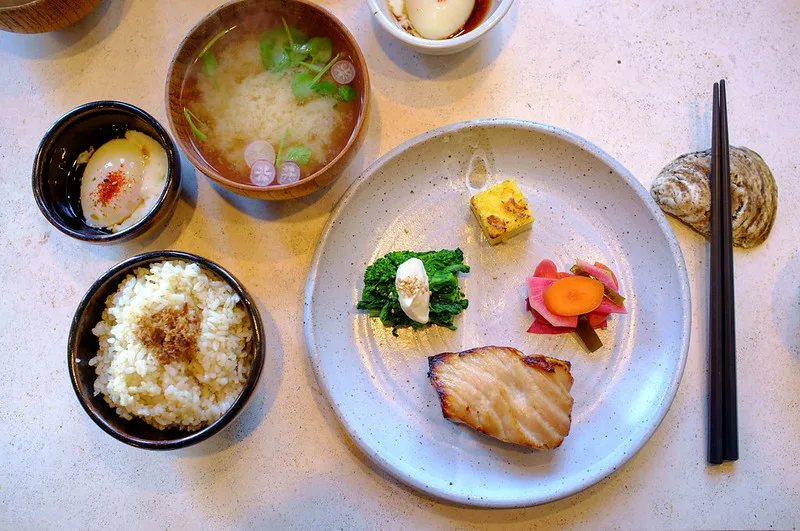
Mastering Washoku Cuisine Techniques
Cooking Techniques
Washoku cuisine features a wide variety of cooking techniques. Each of these bring out the unique flavors and textures of the ingredients. Some of the most common cooking techniques used in Washoku cuisine include grilling, simmering, and frying. Grilling, or yakimono, is how you cook meat, fish, or vegetables and can impart a smoky flavor to the dish. Simmering, or nimono, involves cooking ingredients slowly in a flavored broth to create a tender and flavorful dish. Frying, or agemono, is how they create crispy and crunchy textures in dishes such as tempura.
Precision and Attention to Detail
Precision and attention to detail are essential elements of Washoku cuisine, which is the traditional cuisine of Japan. Washoku emphasizes the use of fresh, seasonal ingredients and the presentation of food in a visually appealing manner. To achieve this, precision and attention to detail are necessary in every aspect of the culinary process, from selecting ingredients to preparing and presenting the final dish.
In Washoku cuisine, the precise cutting of ingredients is crucial to create dishes that are not only visually appealing but also enhance the flavor and texture of the food. For example, the technique of “katsuramuki” they use to slice vegetables like cucumbers or daikon radish paper-thin to create an elegant presentation. Similarly, the “tsukemono” technique is used to pickle vegetables to add flavor and texture to the dish.
Creating Beautiful and Harmonious Dishes
In Washoku cuisine, presentation is just as important as taste. Dishes are carefully put on plates and bowls to create a beautiful and harmonious composition. The use of color, texture, and shape is crucial in creating a visually stunning dish. For example, a traditional Japanese bento box might feature a variety of colorful dishes arranged in a way that is both visually appealing and practical.
To create beautiful dishes in Washoku cuisine, attention to detail is essential. Chefs must carefully select ingredients that are in season and use techniques that bring out the natural flavors of the ingredients. Additionally, they must pay close attention to the presentation. They use techniques such as garnishing, layering, and arranging to create dishes that are as visually stunning as they are delicious.
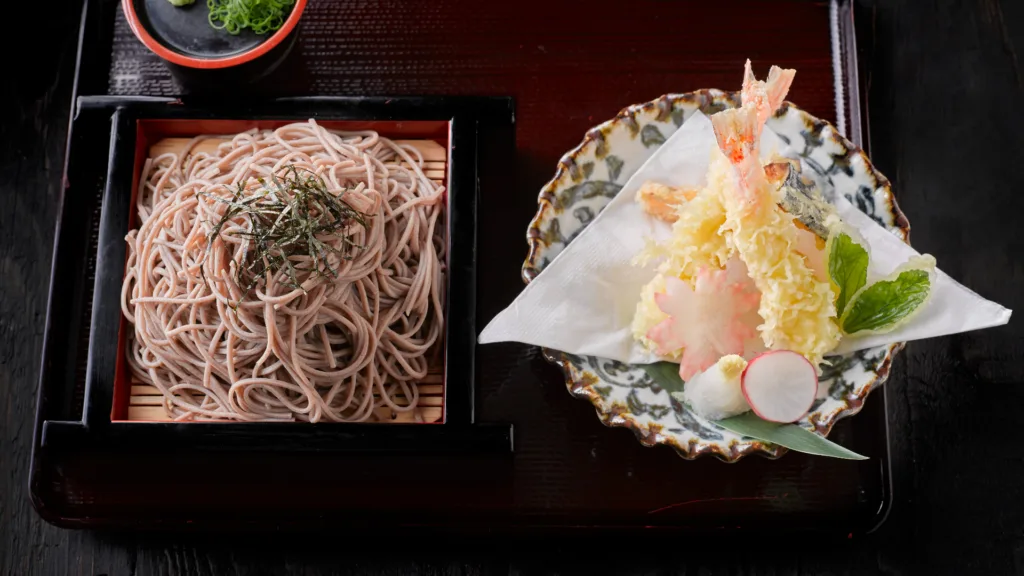
Traditional Washoku Dishes
Washoku cuisine is a diverse and flavorful cuisine with a wide range of dishes to choose from. Here are a few popular dishes and their ingredients:
- Sushi. Sushi is perhaps one of the most well-known Japanese dishes. It consists of vinegared rice, topped with various ingredients such as raw fish, vegetables, and eggs. Sushi dates back to the 8th century when it was first developed as a way to preserve fish. Today, it is a staple of Japanese cuisine. If in Tokyo, try sushi at the famous Sukiyabashi Jiro.
- Tempura. Tempura is a dish of battered and deep-fried seafood or vegetables and is often served as a side dish or appetizer. The dish was first introduced to Japan by Portuguese traders in the 16th century and has since become a popular part of Washoku cuisine.
- Ramen. Ramen is a noodle soup dish that typically consists of Chinese-style wheat noodles served in a meat or fish-based broth, along with toppings such as sliced pork, dried seaweed, and green onions. The dish has a long history in Japan, dating back to the late 19th century, and has become a popular dish around the world.
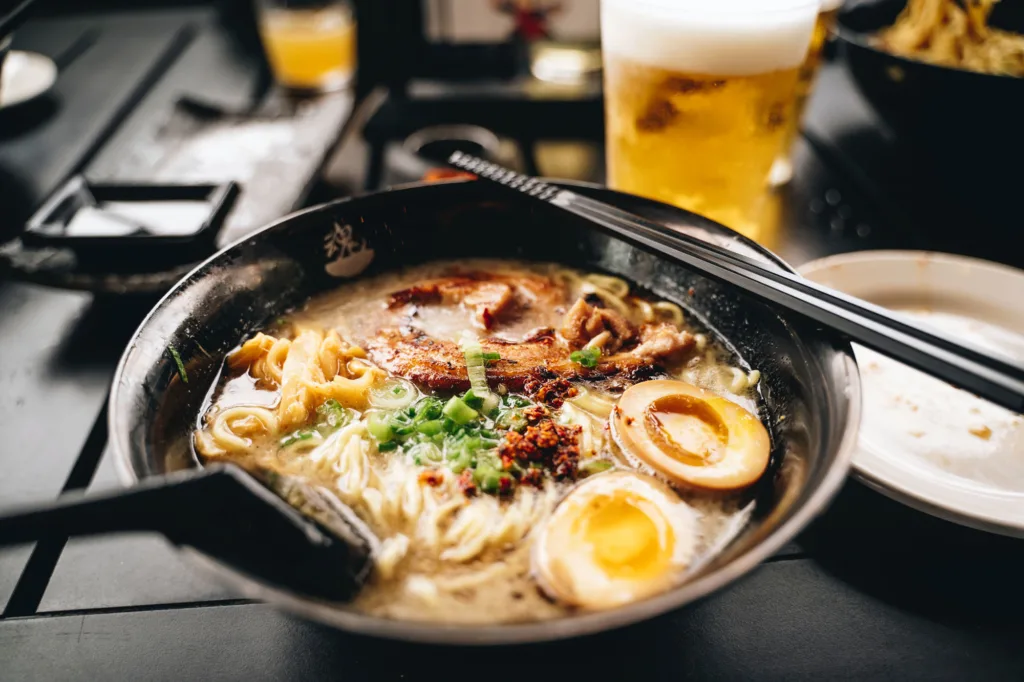
Exploring Washoku in Japan
If you’re a food lover, traveling to Japan to experience Washoku cuisine firsthand is an absolute must. Not only will you get to taste some of the most delicious and unique dishes in the world, but you’ll also gain a deeper understanding of the culture and history behind the cuisine.
Top Washoku Restaurants to Try in Japan
If you’re a foodie planning a trip to Japan, you won’t want to miss out on trying some of the best Washoku restaurants the country has to offer. From traditional sushi spots to modern izakaya, there’s something for everyone.
One of the most well-known Washoku restaurants in Japan is Sukiyabashi Jiro in Tokyo. This sushi spot has gained worldwide fame thanks to the documentary “Jiro Dreams of Sushi,”. It showcases the life and work of Jiro Ono, the restaurant’s 95-year-old sushi master. The restaurant serves a set menu of around 20 pieces of sushi. Each one made with the freshest and highest quality ingredients.
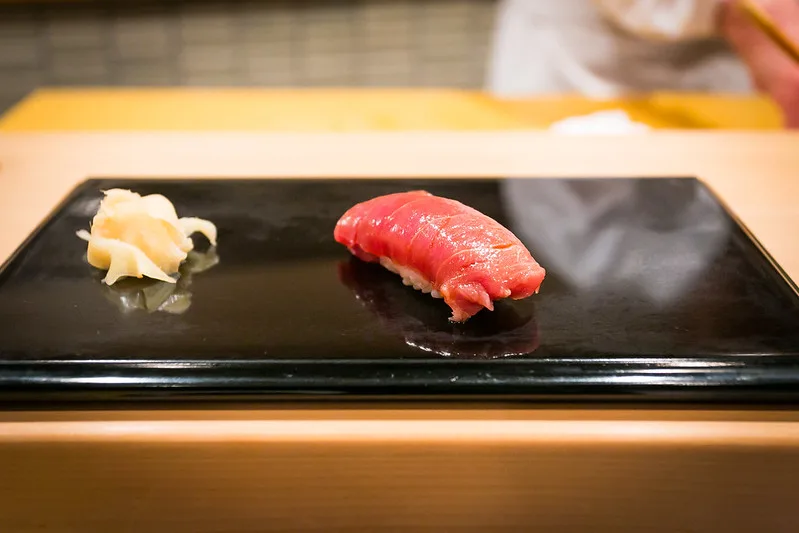
If you’re in the mood for some soba noodles, be sure to check out Yoshino Soba in Kyoto. This restaurant has been serving up handmade soba noodles for over 130 years. Their signature dish is the “Tenzaru Soba,” which features cold soba noodles served with dipping sauce, wasabi, and green onions.
For a more modern take on Washoku cuisine, head to Den in Tokyo. This Michelin-starred restaurant is famous for its innovative and playful dishes. Such as “den-dog” (a hot dog made with Wagyu beef and topped with truffle mayo) and “denwa,” a dessert made to look like an old-fashioned telephone.
Cultural Etiquette and Tips for Ordering Washoku Dishes
When dining in a Washoku restaurant, it’s important to keep in mind cultural etiquette and tips for ordering dishes. It’s customary to say “Itadakimasu” before beginning the meal and “Gochisousama deshita” after finishing, as a way of expressing gratitude for the food and the efforts of the chef and staff. When ordering, it’s best to ask the server for recommendations based on the seasonal specialties and the chef’s signature dishes. It’s also important to be mindful of portion sizes and to avoid wasting food. When using chopsticks, it’s best to avoid crossing them or sticking them vertically into the rice, as these gestures are impolite. Finally, it’s important to be respectful of the traditions and customs of Washoku cuisine. By following these tips, visitors can fully appreciate the unique culinary experience of Washoku cuisine while showing respect for Japanese culture.
Seasonal Washoku Dishes to Try in Japan
One of the things that make Washoku cuisine so unique is its focus on using seasonal ingredients. Japanese chefs take great care in selecting the freshest and most flavorful ingredients that are in season.
Sakura mochi
In Japan, the arrival of spring announces a variety of seasonal dishes, and one of the most popular among them is Sakura Mochi. Sakura Mochi is a traditional Japanese sweet made with sticky rice flour, with sweet red bean paste, all in a salted cherry blossom leaf. The dish gets its name from the cherry blossom, or “sakura,” which is an iconic symbol of spring in Japan. The pink hue of the cherry blossom leaf used to wrap the mochi adds to its appeal and enhances its seasonal flavor. One can enjoy this mochi during the cherry blossom season, which lasts for a few weeks in late March to early April. In addition to its delicious taste, Sakura Mochi is also popular for its beautiful presentation and its cultural significance as a springtime delicacy.
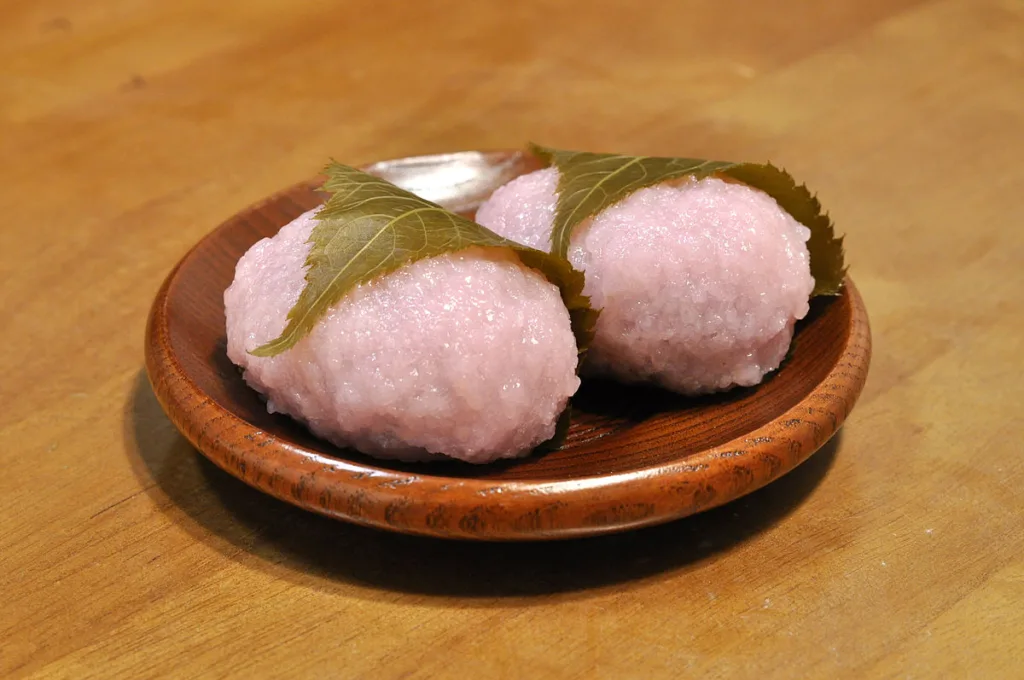
Hiyashi Chuka
It is a popular Japanese dish that you can enjoy during the summer months. It consists of chilled, wavy noodles served with a variety of toppings, such as egg, cucumber, ham, and tomato, and a tangy sauce made from soy sauce, vinegar, sugar, and sesame oil. The dish is refreshing and light, perfect for hot summer days. Hiyashi Chuka is also versatile, as you can customize the toppings. . It is commonly found in Japanese restaurants and is a popular dish to make at home. The colorful and attractive presentation of Hiyashi Chuka adds to its appeal, making it a favorite among foodies and Instagram enthusiasts alike.
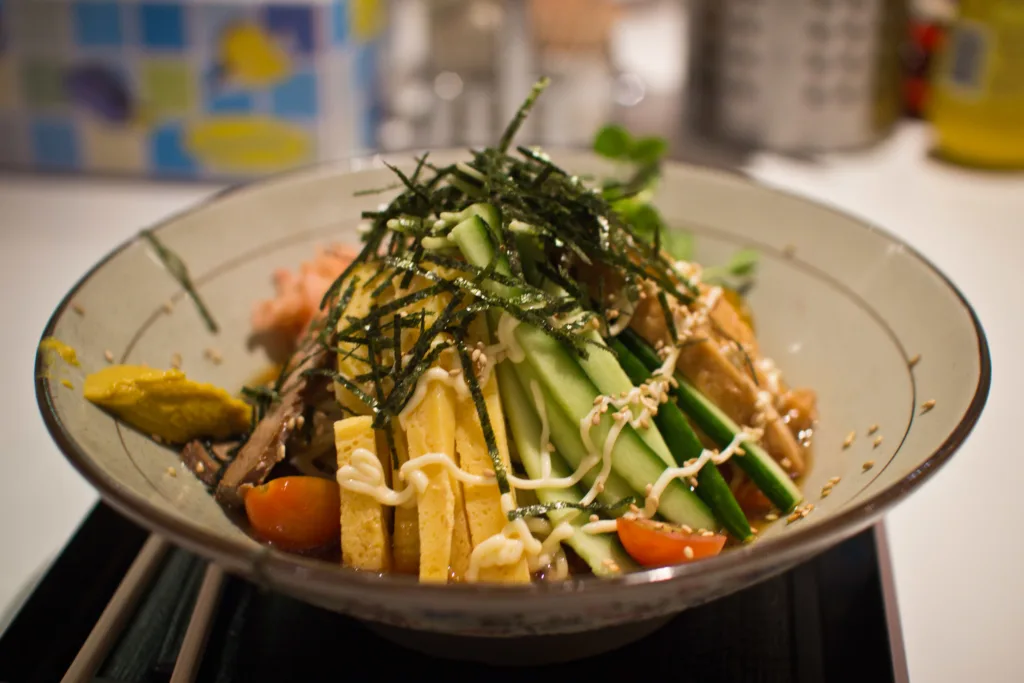
Matsutake Gohan
It’s a rice dish cooked with matsutake mushrooms which are known for their unique aroma and flavor. First, the mushrooms are cleaned and sliced and then cooked with rice and water. The result is a fragrant and flavorful dish that’s usually served as a main course. The matsutake mushroom is quite expensive, which is why Matsutake Gohan is considered a delicacy in Japan.
During the winter season, Washoku cuisine offers a variety of hearty and warming dishes that are perfect for the cold weather. Oden is one such dish that is widely popular during the winter months in Japan. This dish is essentially a simmered stew that includes ingredients such as daikon radish, konnyaku (a type of yam cake), and boiled eggs, all served in a savory broth. Oden is known for its warming and comforting properties and is often enjoyed as a communal meal with friends and family.
Another popular winter dish in Washoku cuisine is nabe, a type of hot pot that is ideal for warming up on a chilly night. Nabe typically involves cooking a variety of ingredients such as vegetables, tofu, and meat in a flavorful broth at the center of the dining table. Diners can then take their desired ingredients from the pot and eat them with rice or other accompaniments. Nabe is a beloved winter dish in Japan that not only offers delicious and hearty flavors but also brings people together for a communal dining experience.
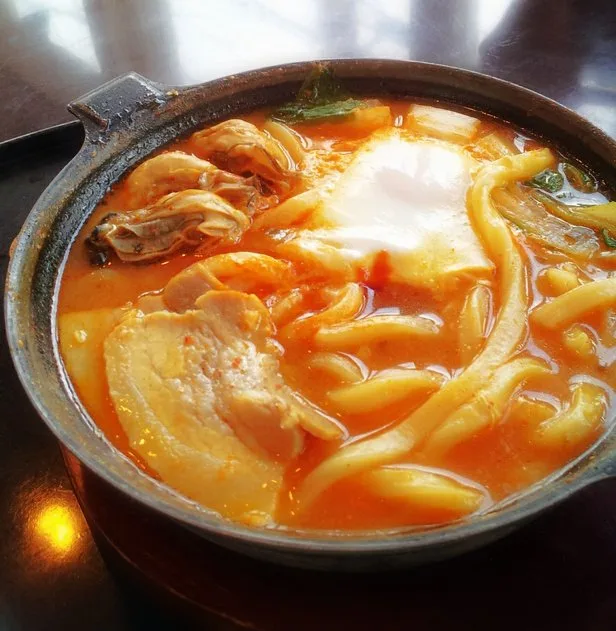
For those curious to learn more about Japanese Cuisine
For those curious to read more about Washoku, the traditional cuisine of Japan, there are several excellent books available that delve into the history, culture, and techniques behind this fascinating culinary tradition. Here are five top book recommendations:





Experience the deliciousness of Washoku cuisine firsthand!
Washoku cuisine is not just about food, but also about culture, history, and traditions. From the use of seasonal ingredients to the emphasis on balance and presentation, Washoku is a unique culinary experience that offers something for everyone. Whether you’re a foodie or just someone who loves to explore new cultures, Japan’s Washoku cuisine is sure to delight your taste buds and leave you with lasting memories. So why not book your trip to Japan today and embark on a delicious culinary adventure?
